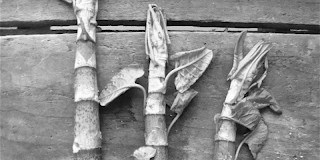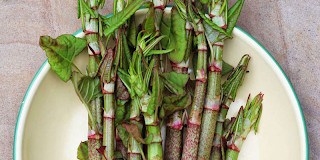The World Conservation Union lists Japanese Knotweed as one of the world’s worst invasive plants. Perhaps it should be grown in nations where starvation is a year-round occurrence. Japanese Knotweed, which was introduced into the United Kingdom in 1825, has been on the invasive species list for more than 30 years and must be disposed of at landfills that are licensed to handle the hated plant. In fact, they spend roughly two billion pounds every year to be able to safely dispose of it.
Many weeds are edible, and they have a propensity of turning out to be an abundant and readily available food source if we only knew how to use and cook them. In this article, we will cover when to avoid eating Japanese Knotweed, and when it can be eaten.
When to Avoid Eating Japanese Knotweed

The main reason to avoid eating Japanese Knotweed is that there is no way of knowing if it has been treated with herbicides throughout its life. It is often frequently sprayed with pesticides since it is an invasive plant that can cause substantial damage to properties.
Before considering cooking with Knotweed, it is critical to ensure that the plant has not been chemically treated and to be certain of this. However, if the plant is chemical-free, don’t let this deter you from cooking it. As long as the plant is safe to consume and properly disposed of, it can be a tasty addition to a variety of meals and sweets.
Is Japanese Knotweed dangerous?
When you hear all of the horror stories about Japanese Knotweed in the news, it’s tempting to believe it’s a dangerous hazard. Images of Knotweed growing through concrete cracks, taking over people’s yards, and generally being a nuisance can be found all over the internet. When discussing the plant, the word ‘triffid’ is never far from people’s lips. As a result, many people believe it is hazardous to human health. Nothing could be farther from the truth.
It’s safe to touch and even edible. Japanese Knotweed, which tastes like lemony rhubarb, is used in a wide range of sweet and savoury recipes, including purees, jams, sauces, fruit compotes, soups, wines, ice cream, and even gin!
Japanese Knotweed is high in vitamins A and C and has been shown to help prevent and treat cognitive problems. However, it is only edible for a brief period until the soft red-purple stalks, which resemble asparagus, grow hard and woody around May.
Eating Japanese Knotweed

Many weeds are edible, numerous, and readily available as food if we only knew how to use and cook them. Invasive plants are also delicious to eat. Why curse something when you could consume it and benefit from its abundance, I always think. Many weeds, like Japanese Knotweed, are at their most nutritious in the spring.
Japanese Knotweed (Fallopia japonica) is a lovely, delicious plant with a poor reputation. A botanist introduced it to Europe in the mid-nineteenth century. It had been circulated among botanical gardens and garden enthusiasts for decades before the faults with it were discovered. Japanese Knotweed grows at an astonishing rate and can penetrate masonry and concrete, causing substantial damage. It has been known to devalue properties by growing up to 20 cm per day and spreading roots up to 3 metres deep. Japanese Knotweed is classified as “controlled waste,” and it must be disposed of at a certified landfill.
In other situations, the environment department has penalised those who failed to properly dispose of the plant. So don’t compost leftovers, dump them in the garbage, or cook everything and then throw it away.
What part of Japanese Knotweed is edible?
Most parts of Japanese Knotweed are safe to eat. Early spring shoots and leaves are delicious, resembling a hybrid between asparagus and rhubarb. The highest known concentration of resveratrol in plants is found in roots—the same potent antioxidant found in red grape skin and red wine.
Mature shoots are rougher and must be peeled before eating. They can be eaten raw, grilled, sautéed, pickled, and other ways. Knotweed can also be used in baked goods. soups, aspics, sauces, jellies, and chutneys, as many high-end restaurants do as they embrace the foraged foods trend. It has a sour flavour similar to rhubarb and can be replaced in dishes.
Can you eat Japanese Knotweed leaves?
The leaves of Japanese Knotweed can be eaten, but may have a stronger flavour than the fibrous stems, it’s mostly recommended to remove them before cooking. Don’t feel bad about getting rid of them. If you do choose to use the leaves when you cook, make sure to use small quantities to prevent them from overpowering your dish.
To Do or Not to Do, That Is the Question
While Japanese Knotweed is edible and safe for both people and animals (and is even used in recipes like Knotweed crumble and beer!) it can cause severe damage to your property, and if it spreads to your neighbours – you may be held liable and be faced with some serious consequences. If you believe Japanese Knotweed is growing on your land, we suggest reaching out for a Japanese Knotweed survey before it’s too late.




